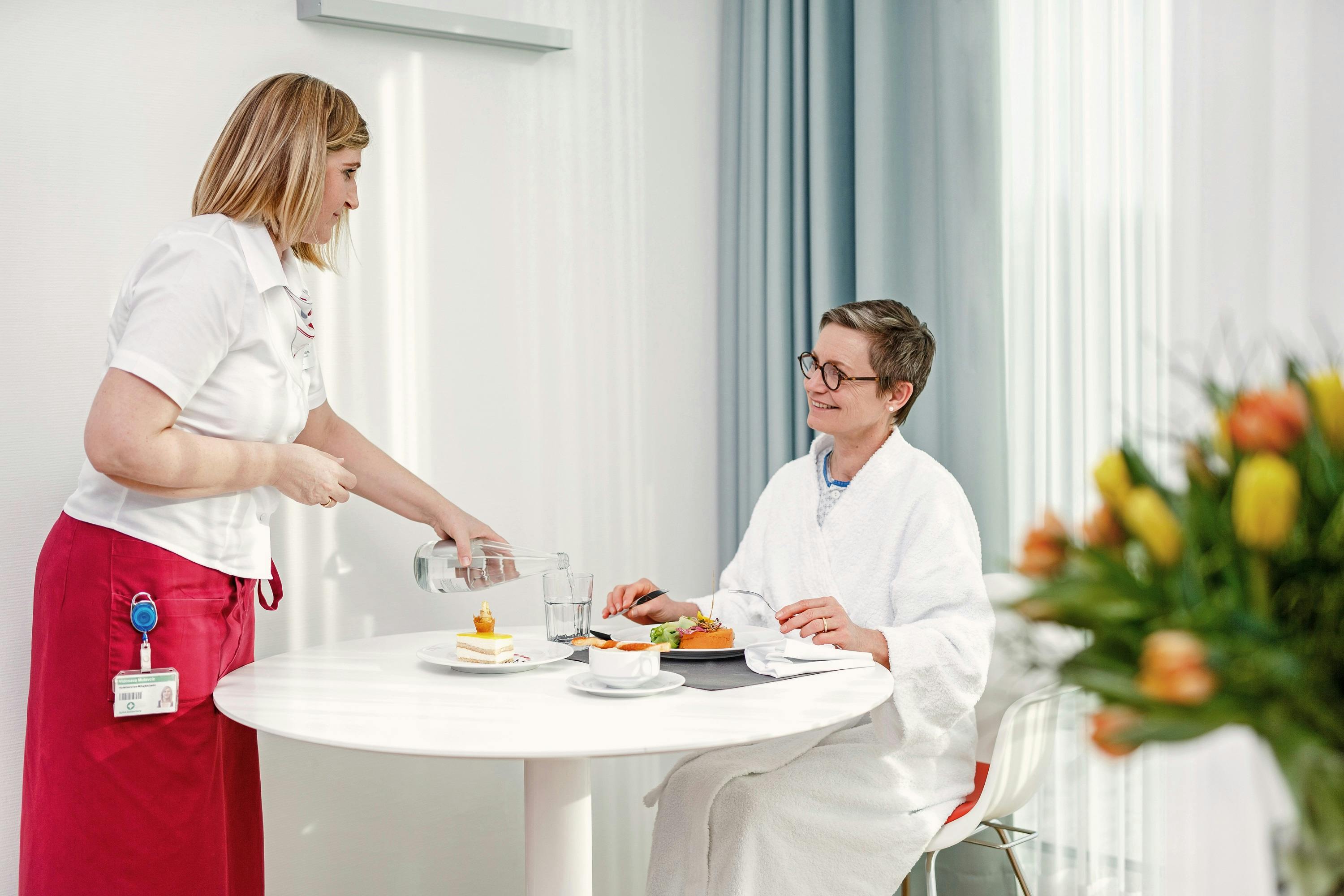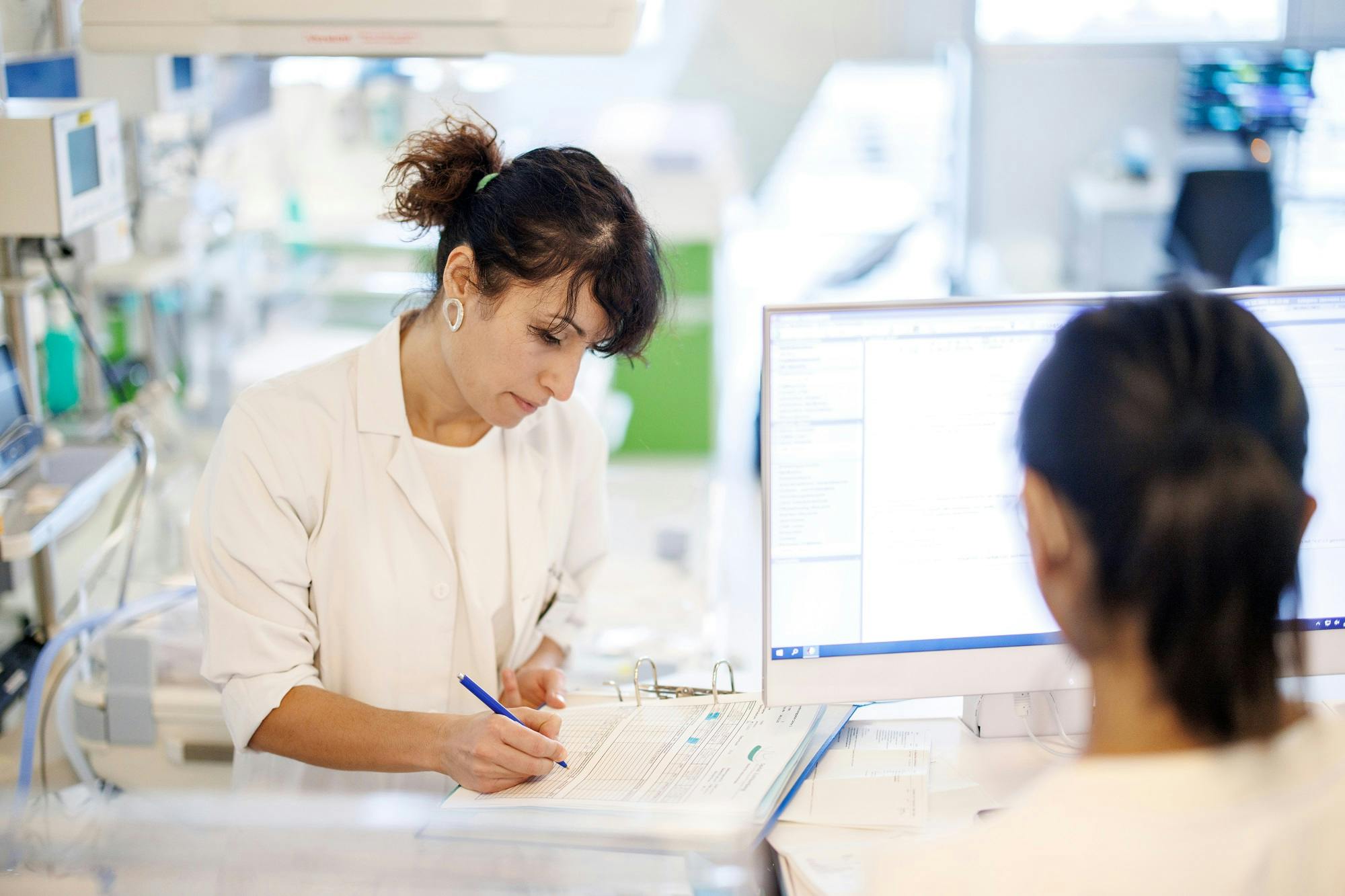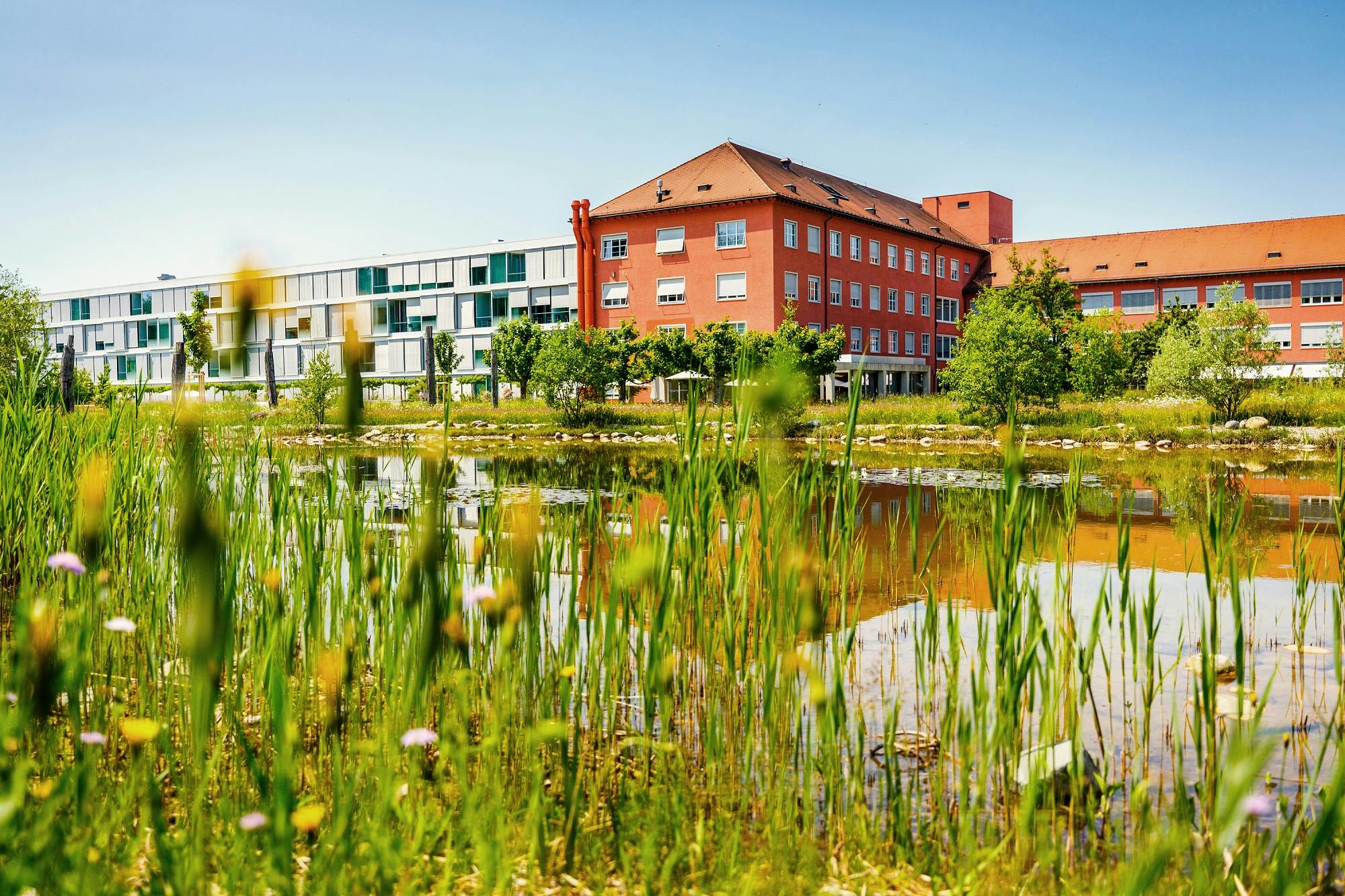Innovation and medicine - Interview with Prof Fansa
Prof. Dr. med. Hisham Fansa
February 6, 2023
10 min
Prof. Dr Hisham Fansa, Head of Plastic Surgery and Head of the Breast Centre Zurich at Zollikerberg Hospital, talks in an interview about the newly developed techniques in breast cancer and facial surgery.
Prof. Fansa, you are Head of Plastic Surgery and Head of the BreastCentre Zurich at Zollikerberg Hospital. Tell us what characterises your work?
Our job is basically body-shaping surgery. Reshaping and reconstruction. We focus our work on a few main areas: Face, breast and abdomen. This concentration allows us to offer operations of a high quality. Ultimately, this is what we want to offer our patients: Well-done plastic surgery. With us, the results are always visible in some way. Whether we are operating on a facelift, a facial tumour or a breast. In the end, patients see the results. The demands are therefore high. We have to differentiate between aesthetic procedures and reconstructions. Expectations are naturally higher for aesthetic procedures. This is also true for reconstructive procedures, but here it is a restoration and not the "original". We want to get as close as possible to the "original".
Why the double role?
I am one of the few plastic surgeons who have learnt both the oncological part of breast surgery and the reconstructive part. I see this as an advantage for patients. They can have the oncological procedure on the breast, i.e. the removal of the tumour, and at the same time they get the maximum of what is aesthetically possible so that the breast looks good again. As plastic surgeons, we have mastered surgical techniques that others have not learnt in their further training. We can apply these to every operation. Initially, patients always say to me: "The main thing is that the cancer is gone", but at the latest when everything is over, patients want their normality back: a normal, if possible symmetrical breast. It is therefore important to plan and execute the breast shape and breast aesthetics well right from the start.
We must not forget that the treatment of breast cancer is not just surgical, but a combination of many specialities, practitioners and therapies. Just looking at the surgical aspects is not enough. As an oncological and plastic surgeon, I can guide patients through the difficult and stressful treatment together with our colleagues at the BreastCentre Zurich. Our motto is: oncologically safe and as aesthetic as possible.
When we look at your work, we realise that you are constantly striving for innovation - for example with the new "Short Scar - Deep Plane (SSDP-Lift)" procedure as part of the facelift. What drives you? And what do you expect from it?
Innovation in surgery is extremely important. There is always room for improvement. Some surgical techniques, especially in facelifts, are no longer up to date and need to be modernised to improve results and quality of life. This is particularly important with facelifts. Everyone can see the result. You can't hide it. For a facelift to look natural, very specialised surgical techniques and surgical experience are required. There are some anatomical structures in the face that should not be damaged. We all know the "celebrities" who have had an accidental facelift. Our patients don't want that. They want to look rested and refreshed. They don't want to change their appearance. They just want it to be fresher; when they look in the mirror, they don't want another person looking out.
Can you tell us in more detail what SSDP-Lift is all about, what the benefits are and who this technique is suitable for?
With this technique, we can specifically operate on younger patients who only complain of changes in the cheek and jaw area, such as the onset of sagging cheeks and jowls. In the long term, this can only be tightened with a lift. Fillers and thread lifts do not solve the problem, or at best only for a short time. We can achieve a good, long-lasting result through shorter incisions and a special tightening of the subcutaneous tissue without excessive swelling. You can return to socialising more quickly than with other techniques. Patients who have already undergone surgery are also often suitable. However, if the neck is also sagging, incisions must also be made behind the ear.
Let's come back to your innovative character. In the context of breast cancer treatment, you have reintroduced and even technically improved a technique that had long been forgotten. How did this come about?
In some patients with breast cancer, we unfortunately have to remove the nipple because the cancer is too close. However, this usually only applies to the so-called "pedicled" operation. However, if the nipple can be preserved as a free graft, it is much more comfortable for the patient. This is an old technique from a time before modern reconstructive techniques were introduced. As a result, many people are not familiar with it. However, this technique only works if you can firstly prove during the operation that there is no cancer on the nipple and have mastered the technique of suturing the nipple back in. And, most importantly, where on the breast. A nipple must be positioned in the right place. A nipple in the wrong place disturbs the harmony. Thanks to some preliminary work, we were able to study precisely these points and reintroduce this old technique.
What a milestone that you have already been able to successfully rid the first patient of cancer and preserve the nipple at the same time with this new surgical technique. So there is hope for other patients too?
We are now using the technique on all patients who can benefit from it. The feedback has been very positive. It simply improves the patients' quality of life.
It has already been reported in the media. Are you already working on future projects that you would like to read about in the media?
My team and I are always working on improving our techniques. Many "little things" can make a significant difference. We are focussing on our main areas. For example, we have introduced a new technique for tummy tucks. This means that patients no longer need drains. At the same time, we can dispense with the previously necessary scar on the navel. We have also been able to significantly reduce the operation time for breast lifts and breast reductions through a technical modification, without compromising the aesthetic result.
0/0
Weitere Beiträge
Offer
Palliative care: your quality of life takes centre stage
A serious illness changes many things: your everyday life, the way you live together and your thoughts. At Zollikerberg Hospital, you are not alone in this challenging phase of your life. Our Palliative Care Competence Centre supports you and your family and loved ones with professional expertise, experience and humanity. Together, we support you in maintaining your quality of life day after day.
Offer
Practical tips for a safe start as a parent: an insight into our parent driving school
The first few weeks after the birth are an exciting but also challenging time for many parents. We would like to provide valuable support during this important phase with our Parent Driving School - a free weekly programme offered by the Neonatology Clinic and the Women's Clinic. To give you an exclusive insight into the content and benefits of the Parent Driving School, we spoke to Dr Lena Pfender, our experienced paediatrician on the Parent Driving School team.
Offer
Gynaecological care for impaired women: A new service at Zollikerberg Hospital
Impaired women often have no access to specialised gynaecological care. This leads to unwanted pregnancies, pain and suffering. Dr Karin Lindauer, gynaecologist at Zollikerberg Hospital, has therefore set up a special consultation for women with cognitive and physical impairments. This service is the first of its kind in Switzerland.


